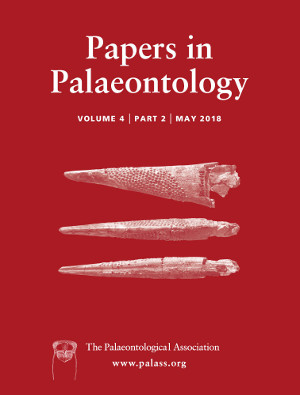Reg. Charity No. 1168330

We describe a new archaeostracan phyllocarid from the famous Early Devonian Hunsrück Slate, Germany. Morphological features suggest a new ceratiocaridid species for which we propose the name Ceratiocaris harpago sp. nov. The exceptionally well‐preserved holotype specimen is the most completely known ceratiocaridid with an almost entire set of appendages including biflagellate antenniform antennules, robust uniramous antennae with hook‐like flagellum, thoracopods densely covered with setae and probably six pairs of pleopods. A nectobenthic lifestyle is considered the most probable and the clasper‐like morphology of the antennae suggests the presence of a sexual dimorphism in this taxon, with the holotype specimen being a male individual.